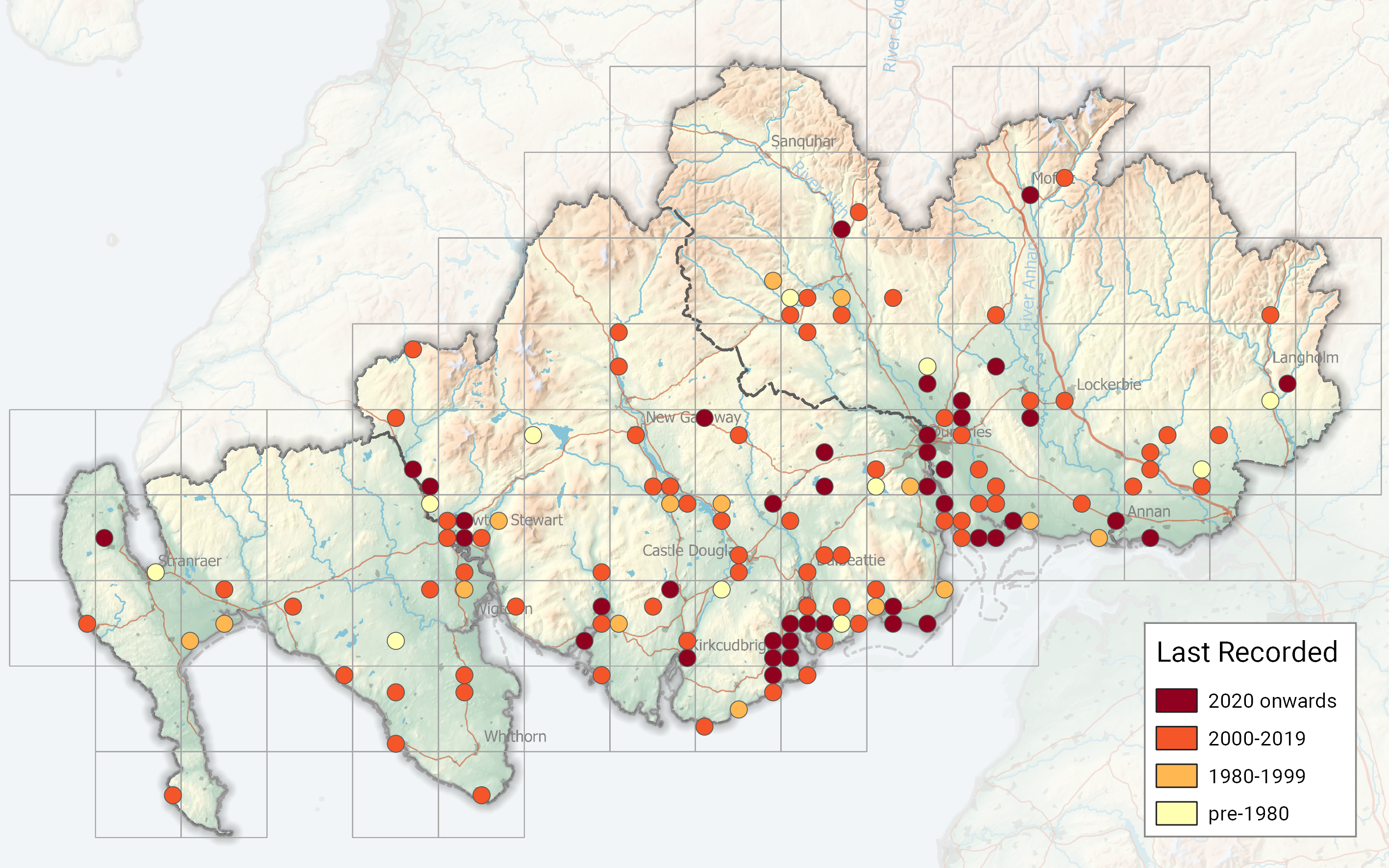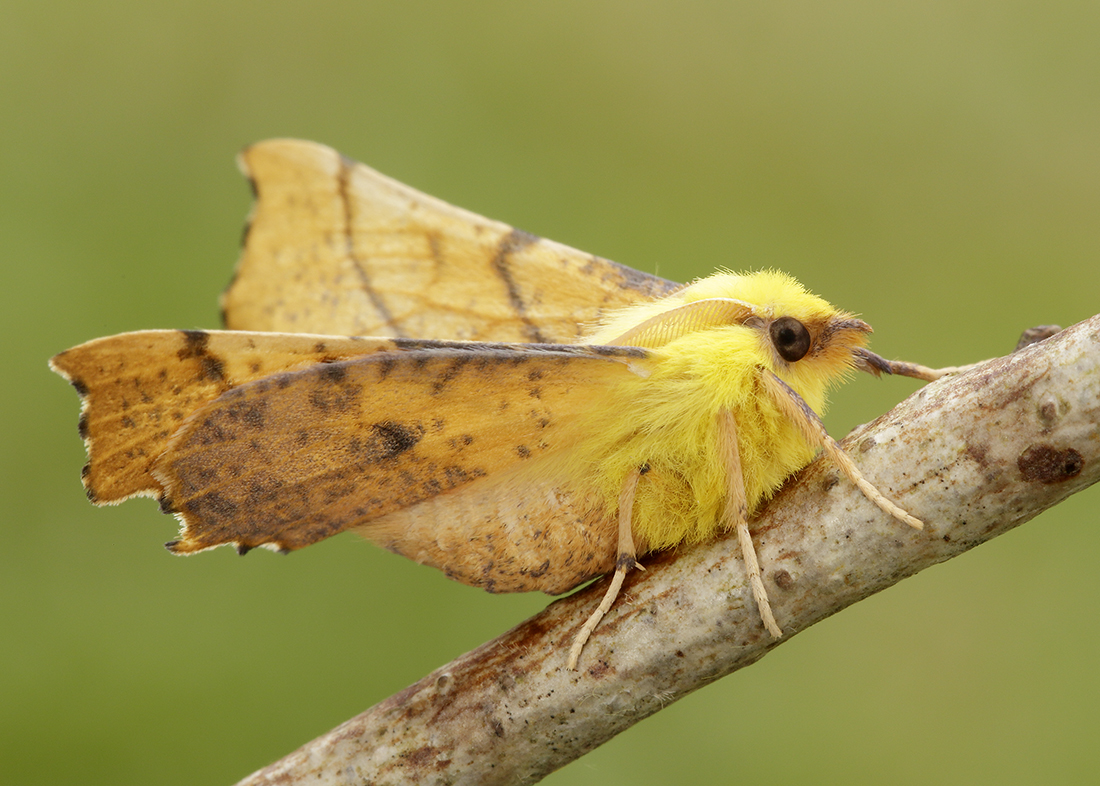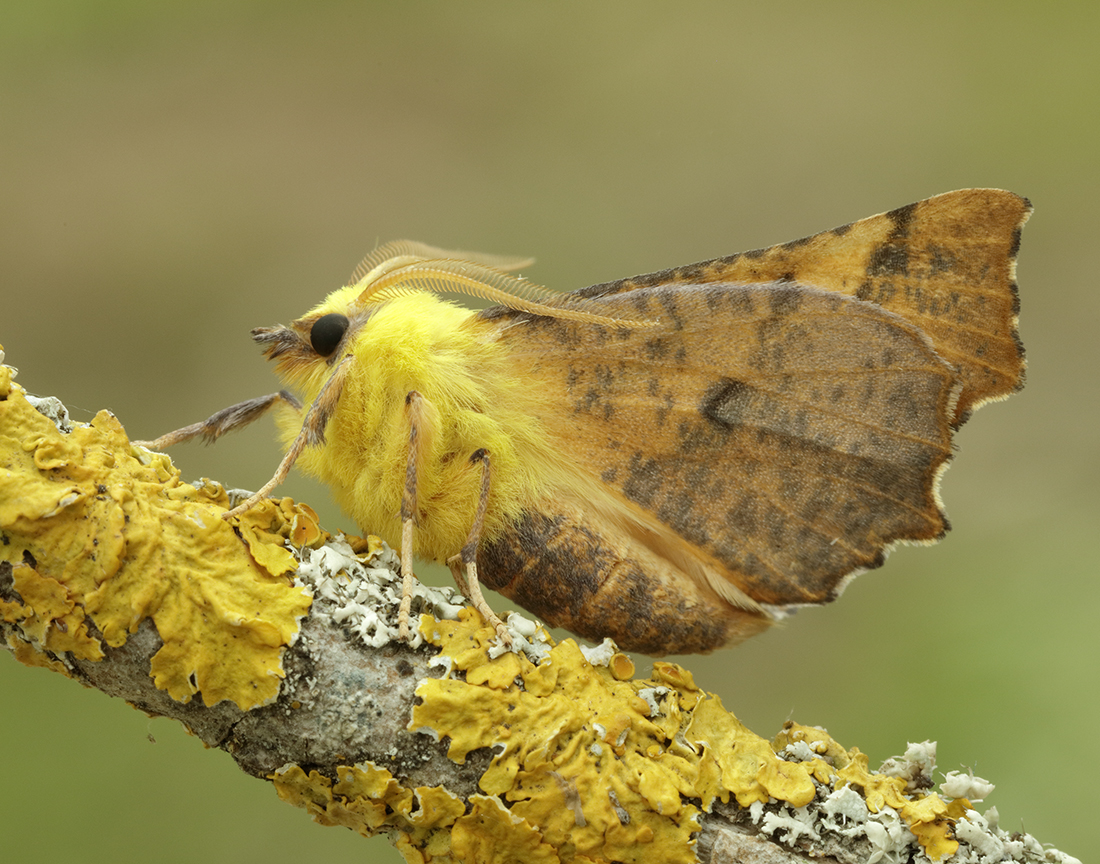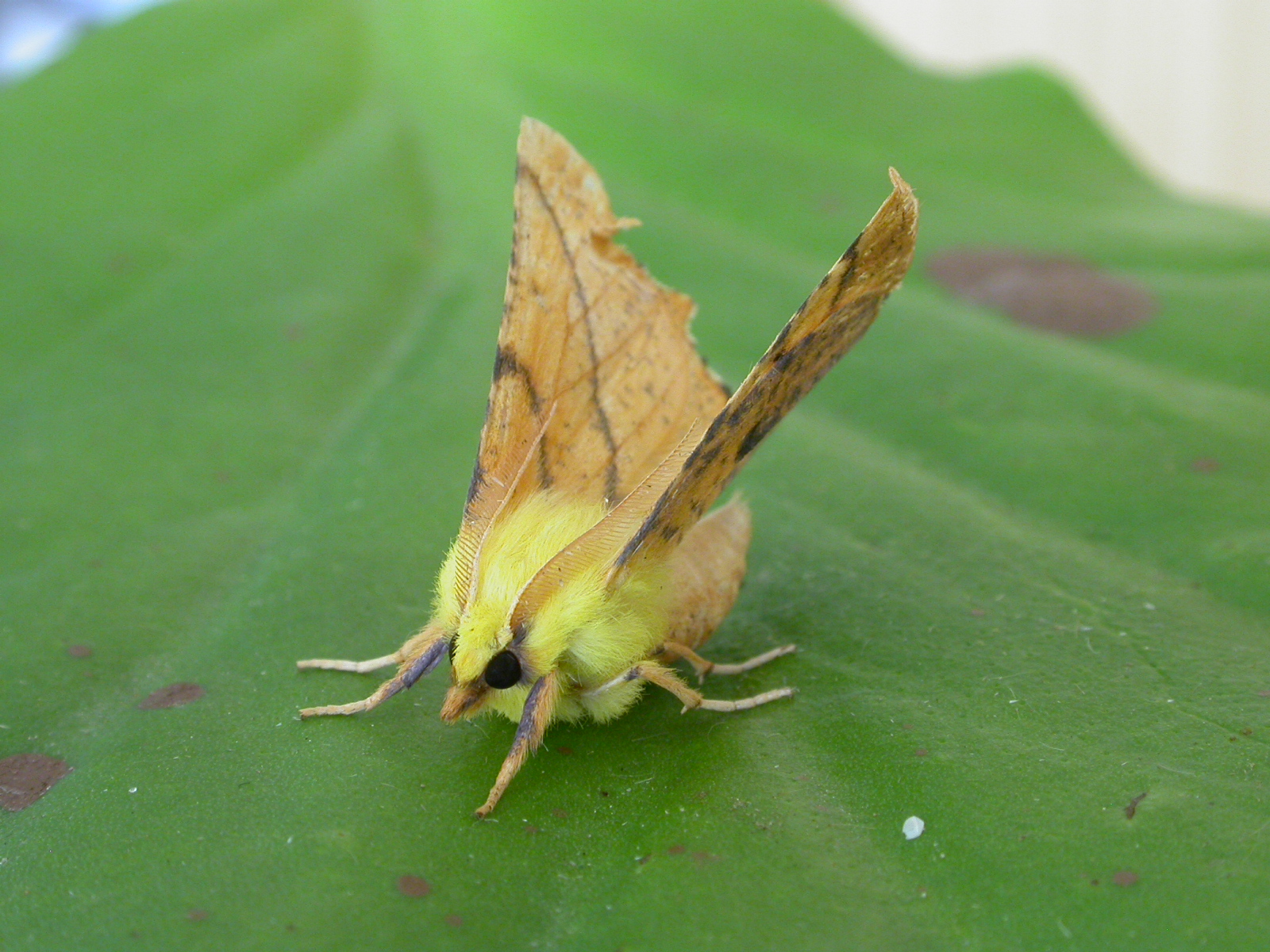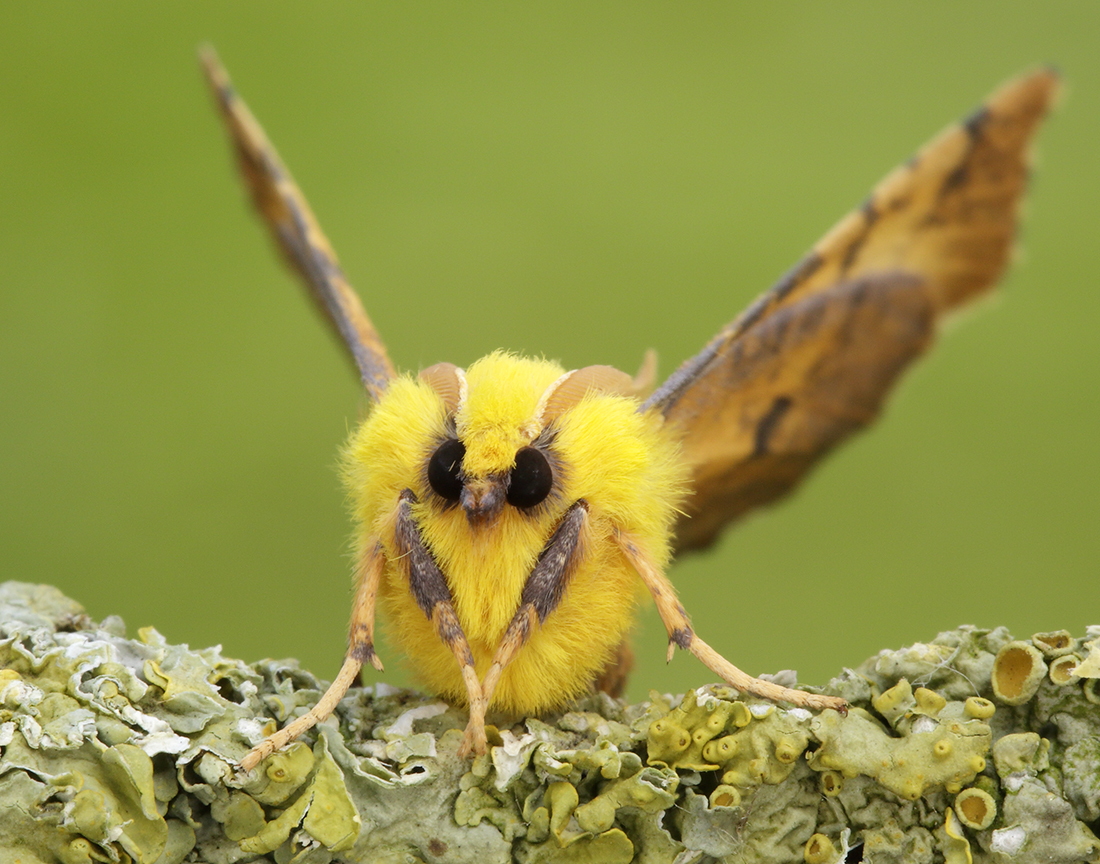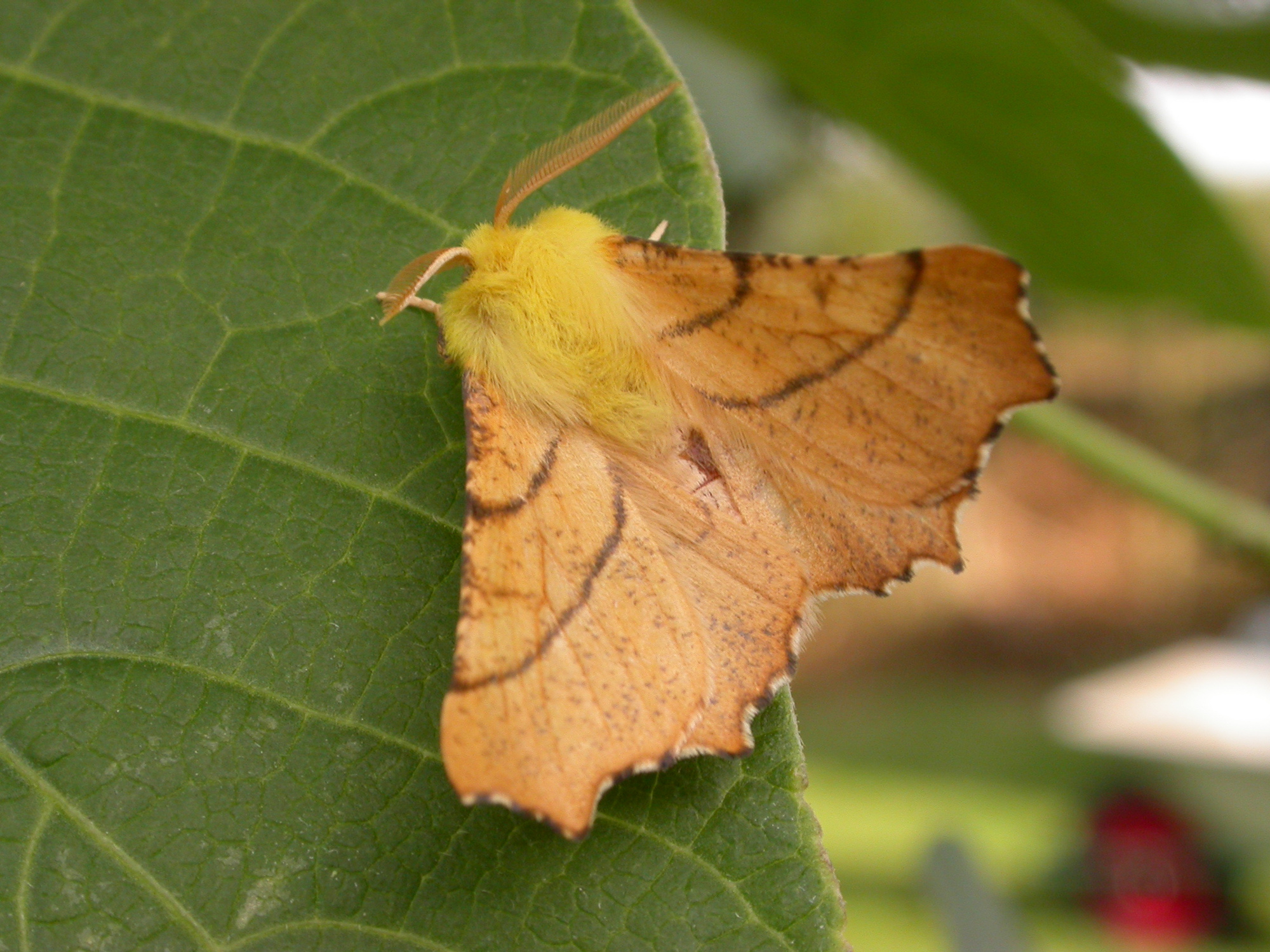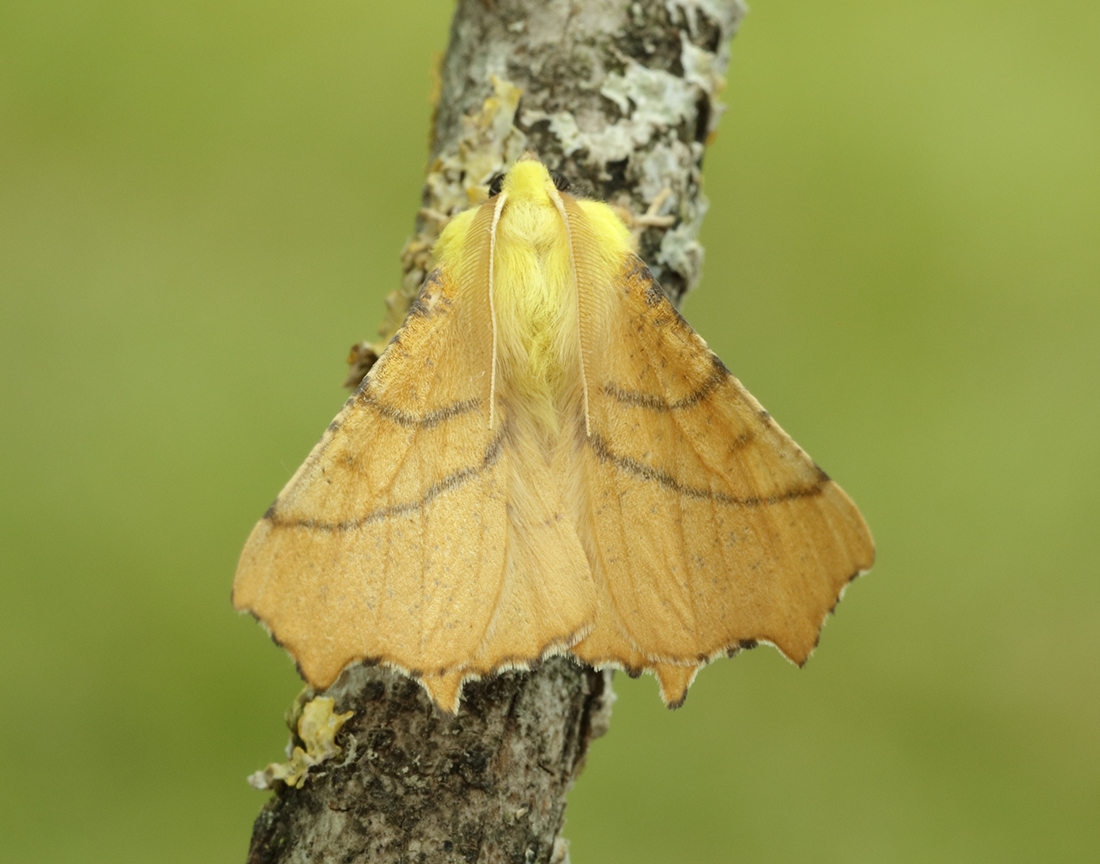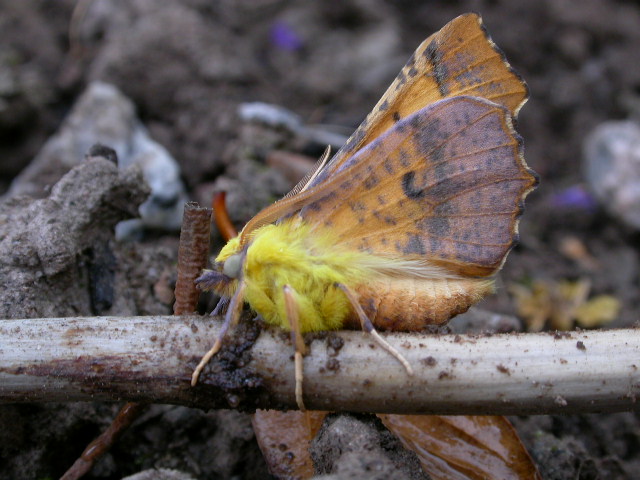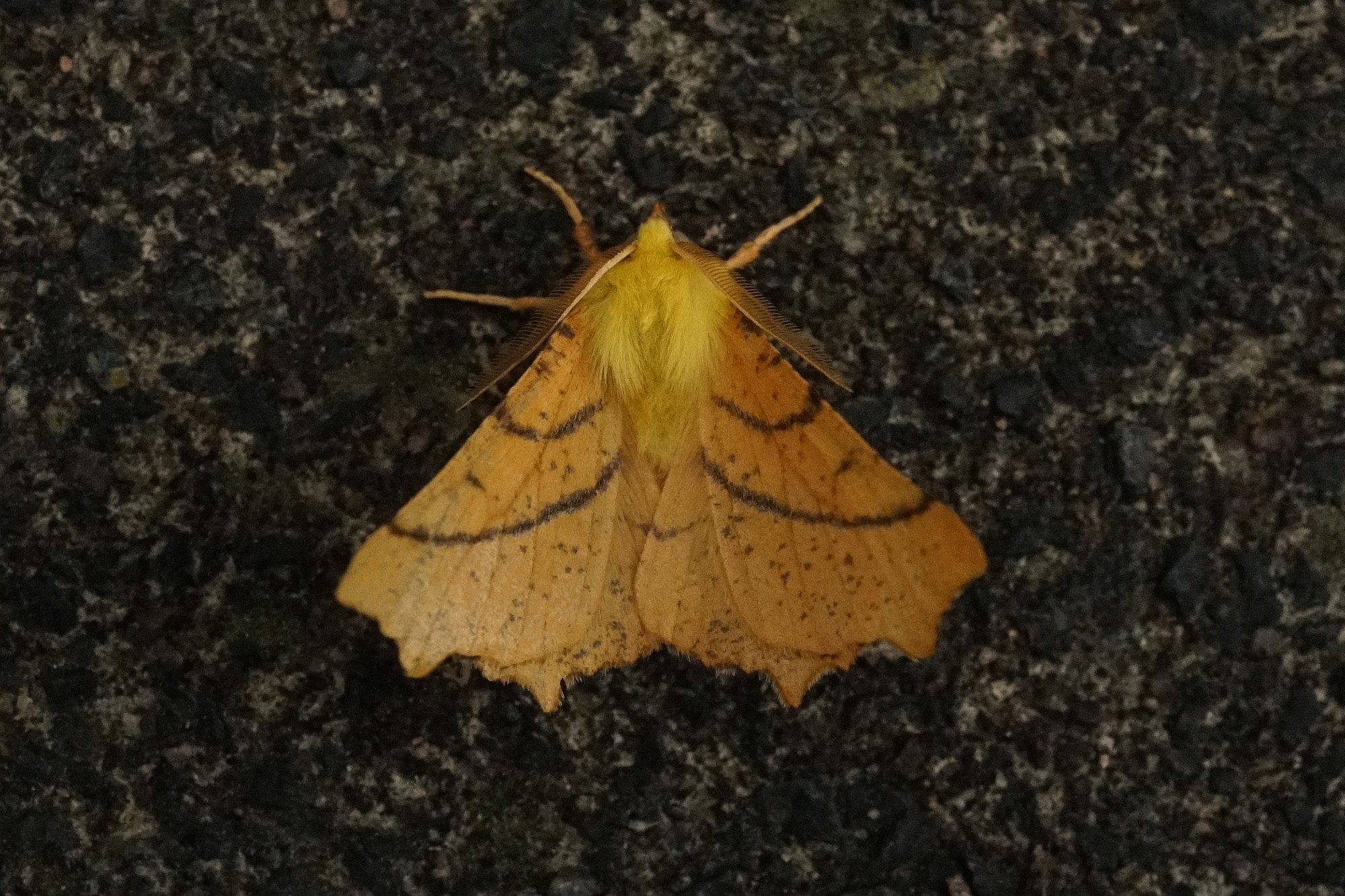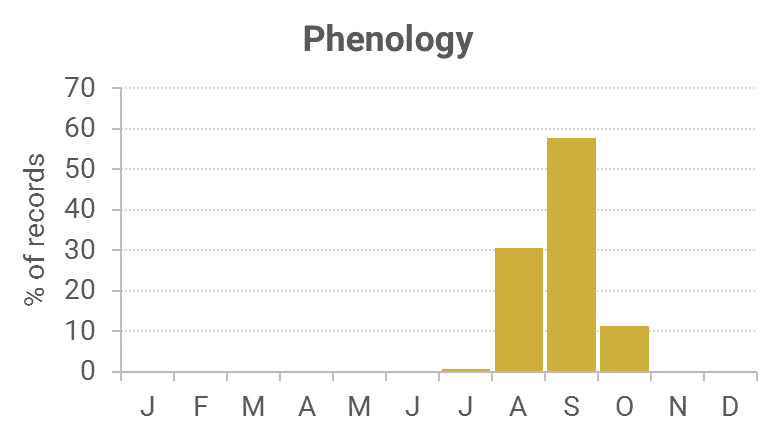Identification
Unmistakable. As with all ‘thorns’ it rests with its wings in the upright or butterfly position, with the canary yellow abdomen making it a most attractive moth.
Recording method
Comes to light.
Life cycle
One generation. Overwinters as an egg on the foodplant. Larvae during May to July. Pupation taking place among plant debris.
Larval foodplants
Larvae feed on various trees including Alder, birches, limes and elms.
Habitat
Wooded areas including parks and gardens.
History
First recorded for Dumfries and Galloway in 1862 for VC73 at Mabie Forest by Lennon who said it was ‘not common’, in 1910 for VC74 at Corsemalzie by Gordon who stated it was ‘common at light’ but not until 1946 for VC72 at Tynron by Duncan.

